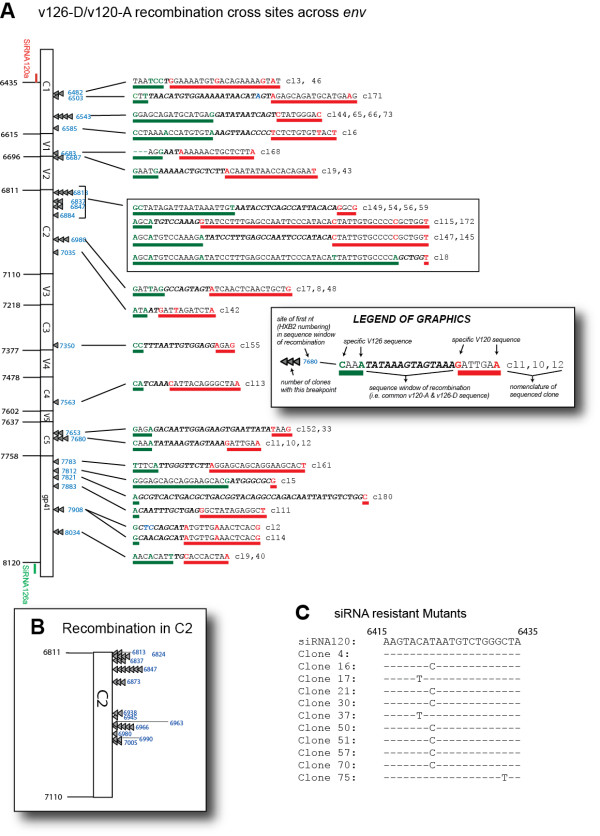Figure 5.
Mapping the v126-D/v120-A recombination sites in env that led to siRNA resistance. (A) In the sample with two rounds of dual siRNA120a and siRNA126a treatment, 39 of 50 sequenced clones were v126-D/v120-A recombinants with recombination breakpoints mapping to region between the two siRNA target sequences (nt6435 to 8120). The "Legend of Graphics" provides a description of (1) site of the first nt in a sequence window for a recombination breakpoint, (2) the nt sequence with v126-D specific sequences immediately preceding the window of recombination, (3) the actual window of recombination with identical v126-D and v120-A sequence, and (4) the nt sequence with v120-A specific sequences immediately following the window of recombination. (B) The fine mapping of the recombination breakpoints in the env C2 region was determined by first PCR amplifying the env PCR product with nested primers (specific for v126-D and v120-A in the C2 region), cloning these products into pCR XL TOPO vector (Invitrogen), and then sequencing 33 clones. (C) Eleven of 50 clones did not contain a v126-D/v120-A but nine of these were v120-A with a specific mutation in siRNA120a target sequence (nt6415 to 5435, except clone #4). Two of the 11 were v120-A/v126-D recombinants which also harbored a mutation in the siRNA120a target sequence.

